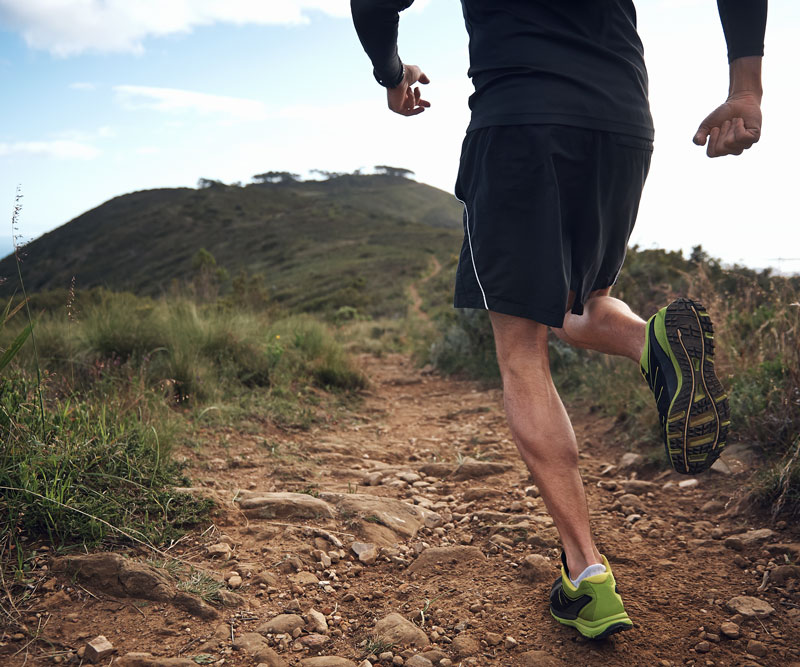
Two Common Overuse Injuries & How to Avoid Them
You have to walk before you can run, but this sage advice can be difficult to follow, especially for athletes who live by a significantly different motto – no pain, no gain.
But if you push too hard too soon, you can end up with an overuse injury.
Two common overuse injuries in the sports medicine field are plantar fasciitis and patellar tendinopathy.
Plantar Fasciitis
Plantar fasciitis is an injury of the plantar fascia, which is a thin tissue that lines the bottom of the foot and helps support the arch.
Usually, plantar fasciitis occurs from micro tears and inflammation of the fascia caused by overuse.
Tight gastrocnemius (calf muscles) and ankles can stress the Achilles’ tendon, which irritates the plantar fascia, especially at the calcaneus (heel).
Other risk factors include:
- Wearing poor footwear.
- Being obese.
- Standing or walking for prolonged periods of time (especially on hard surfaces).
- Increasing activities or exercises too quickly.
- Frequent jumping.
- Having flat feet or high arches.
It is common to feel pain along the heel, but there can also be tightness or pain in other areas along the bottom of the foot.
Pain is typically worse in the morning when you take your first few steps out of bed.
Initial treatment for plantar fasciitis includes stretching, icing (try rolling your injured foot on a frozen water bottle), exercises for the foot and ankle, and modifying activities.
You also may consider taking anti-inflammatories, such as Advil or Aleve, but check with your primary care physician to make sure these medications are safe for you to take.

Also, consider getting orthotics or new shoes. People may need to stop wearing slippers and consider wearing supportive footwear, even in the house, so that they do not walk barefoot.
You may also consider wearing a night splint to help decrease the typical pain upon waking.
The best prevention for plantar fasciitis is to make sure you are wearing the proper footwear.
Another good tip is not to increase activities or exercises too quickly.
If you notice pain, you may need to cut back on exercise and re-evaluate your footwear and gait.
Patellar Tendinopathy
Patellar tendinopathy is inflammation of the tendon that goes from the inferior pole of the patella (kneecap) to the tibia (shin bone).
This is usually a chronic overuse injury of the patellar tendon but can also be an acute injury.
Patellar tendinopathy is typically seen in people who perform activities that involve excessive bounding or jumping, such as basketball, volleyball, tennis, dancing, gymnastics, soccer, football, and track and field.
In fact, patellar tendinopathy is commonly called “Jumper’s Knee.”

Other risk factors include:
- Having muscle imbalances around the knee and core.
- Increasing activities or exercises too quickly.
- Failing to allow tendon and muscles to rest properly.
If the tendon and supporting muscles are not allowed to recover and heal, there can be tendon degeneration and chronic pain.
Signs you may have patellar tendinopathy include localized tenderness over the patella tendon, which may appear thicker or swollen compared to the unaffected side.
Often, the tendon will feel stiff first thing in the morning.
Initial treatment includes icing, modifying or decreasing activities, and incorporating exercises and stretches to help support and strengthen the knee.
You may also consider using supportive tape and patellar tendon straps to reduce pain, as well as a short course of anti-inflammatory medications, such as Advil or Aleve. However, check with your PCP to make sure these medications are safe for you to take.
Prevention starts with rest and recovery. If you start to notice pain, cut back on your exercise.
Once you get back to your regular routine, be sure to practice proper conditioning, including core stability, and good warm-ups and cool downs.
Published on: October 4, 2018





